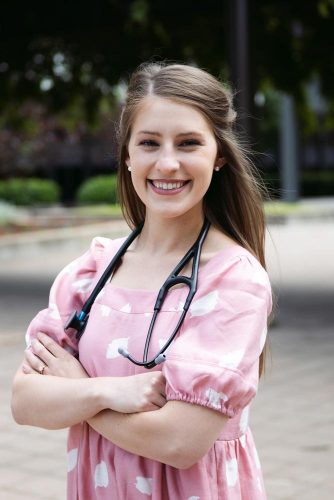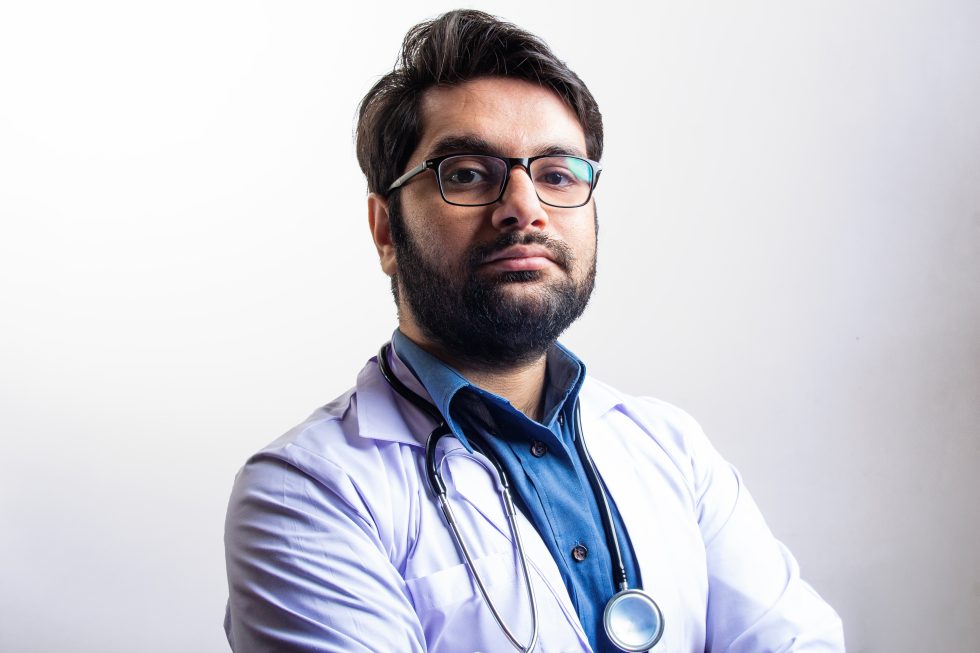Pre-Medicine
Pre-Medicine Partnerships
Asbury University has contractual agreements with certain schools of medicine where students can gain early acceptance by meeting specific requirements.
Lake Erie College of Osteopathic Medicine (LECOM)
The Early Acceptance Program (EAP) is designed to facilitate the admission of Asbury students into LECOM’s Doctor of Osteopathic Medicine (D.O.) program. LECOM will interview eligible students prior to their enrollment at Asbury University or within the first two years of study at Asbury. Students interviewing successfully will be offered a provisional acceptance in LECOM’s Doctor of Osteopathic Medicine program. Upon meeting the criteria for final acceptance they will matriculate at the LECOM campus of their choice (dependent upon space availability). Each academic year, a maximum combined total of 5 students will be accepted by LECOM from Asbury University. See the Health Professions Advisor for eligibility information.
University of Kentucky College of Medicine – Northern Kentucky Campus
This Early Assurance Program (EAP) is designed to provide students from Northern and North Central Kentucky early assurance of admission to medical school. Students apply to the EAP during the spring semester of their sophomore year at Asbury University. An indicated clear interest in establishing medical practice in the Northern / North Central region of Kentucky, and commitment to participate in all elements of the EAP are required. See the Health Professions Advisor for eligibility information.
Medicine
There are two paths to becoming a physician—getting your Doctor of Medicine (M.D.) degree or getting a Doctor of Osteopathic Medicine (D.O.) degree. While the end result is the same—a career as a physician—the training and education are somewhat different. Usually the first two years are didactic (classroom instruction) and the second years are clinically based (rotating between various medical specialties in hospitals and clinics).
Some medical schools take a “systems-based” approach to the curriculum, covering one physiological system at a time (the circulatory system, digestive system, etc.), while others use a “case-based” approach that exposes students to real-world scenarios that need to be solved using their reasoning skills and existing theoretical knowledge. Students learn about the human body and disease by following individual patient cases from start to finish. Some medical schools combine approaches.
For more information, see https://explorehealthcareers.org/.
▾ Allopathic Medicine (M.D.)
Allopathic Medicine, or Allopathy, is a term which refers to science-based, modern medicine, such as the use of medications or surgery to treat or suppress symptoms or the ill effects of disease. Traditionally (and by numbers of graduates) the M.D. is the predominant medical degree. There are over 150 Allopathic Medical Schools in the United States. Gaining admission requires a strong record of academic success, clinical experiences (shadowing, working in a healthcare setting, etc.), volunteering, a competitive MCAT score, and strong letters of recommendation. Following the 4 year program, an M.D. must complete a residency in a chosen specialty which may last anywhere from three to eight years, depending on the specialty.
▾ Ostopathic Medicine (D.O.)
An Osteopathic Physician, or D.O., is a board-certified physician who is fully licensed to practice in every state and in more than 65 countries worldwide. As licensed physicians, they diagnose, treat, prescribe medications and perform surgery. The 4 year program, while similar to that followed by an M.D. medical student, includes extensive training in Osteopathic Manipulative Medicine – a distinctive system of hands-on diagnosis and treatment that focuses specifically on the musculoskeletal system. D.O.s are trained to focus on the whole person, working in partnership with patients to help them achieve a high level of wellness by focusing on health promotion and disease prevention.
Although the majority of D.O.s have chosen to practice General or Family Medicine, they are able to practice the full scope of medicine in all medical specialties, from Pediatrics to Geriatrics, Sports Medicine to Trauma Surgery.
Osteopathic medical students complete four years of medical school, plus three to nine years of additional medical training through internships and residencies in their chosen specialties. Similar to M.D.s, D.O.s also must pass state licensing exams and national boards after earning their degree.
▾ Physician Assistant (P.A.)
Physician Assistants are medical providers who are licensed to diagnose and treat illness and disease, and to prescribe medication for patients. They work in physician offices, hospitals and clinics in collaboration with a licensed physician.
A fundamental differences between a P.A. and an M.D. / D.O. is that Physician Assistants go to P.A. school for 2 years (not 4), the P.A. degree is a Master’s Degree, and a residency is not required unless certain specialties are chosen.
The Central Application Service for Physician Assistants (CASPA) makes it easy to apply to multiple PA programs using a single application, one set of transcripts, one set of letters of recommendation and one personal statement.
In its 2016 ranking of best health care jobs, U.S. News and World Report ranked Physician Assistant (PA) fourth in best health care jobs.
Alumni
 Dr. Rebecca Whitworth ’17 works as a family medicine resident at Lake Cumberland Regional Hospital.
Dr. Rebecca Whitworth ’17 works as a family medicine resident at Lake Cumberland Regional Hospital.
She shares: “I chose family medicine specifically because I wanted a broad general medical training that would allow me to care for people of all ages and provide me a lot of skills needed in a rural community and on the mission field. My education was unique because faith was integrated into our courses, which is especially important in the sciences. I had some very important conversations with some of my wonderful professors that helped me navigate my deepening knowledge of science and its interplay with my faith. These conversations were invaluable and allowed me to learn while being rooted in truth.”
Preparing for Medical School
The undergraduate years of preparing for medical school (MD, DO, or PA) involve rigorous academic studies in the areas of biology, chemistry, and physics. Those years also should include volunteer and healthcare-related activities, such as shadowing, working / volunteering in a hospital or doctor’s office, mission-trips, gaining patient contact hours, working with children, etc. Admissions committees at medical schools not only want to see strong GPA and MCAT scores, they also value an applicant’s heart for the needs of others, and that they possess an understanding of what is involved in being a physician.
▾ What prerequisites are typically required for applying to medical school?
Specific courses to help prepare students for applying to medical school (M.D. or D.O. degrees) are: General Chemistry (1 yr), Organic Chemistry (1 yr), General Biology (1 yr), Physics (1 yr), Biochemistry, Physiology, Psychology, Sociology, and Statistics. Additional recommended courses are Genetics, Physiology, Immunology, and Anatomy. View the Course Planning Guide for Pre-Med.
▾ What major should I choose?
Generally, you can choose whatever major you wish and then add in other required courses you will need. If you choose to major in the sciences (Biology, Chemistry, Biochemistry) the majority of the prerequisite courses are included in the major.
▾ What if I want to be a Physician Assistant?
A career as a Physician Assistant (P.A.) also requires specific coursework that is similar to that of an MD / DO program, but is slightly different and may include additional psychology courses, microbiology, and a course in medical terminology. Many PA programs require applicants to have a lot of patient-contact experience already, such as a nurse or EMT would have. Applicants are encouraged to gain patient contact experience either by working as a Nurse Aide (SRNA / CNA) or as an EMT. Applicants usually take the GRE instead of the MCAT. Visit each PA school’s website for specific requirements.
General Timeline
Most medical schools (MD / DO) require applicants to have an undergraduate degree completed before beginning their program. Below is a brief summary of the process. (See Dr. Branan for more information.)
▾ Years 1 – 3
Take specific prerequisite courses (Biology, General Chemistry, Organic Chemistry, Physics, Biochemistry, Psychology, etc.), shadow physicians, participate on mission trips, volunteer, etc.
▾ Year 3 (spring and following summer)
Take the MCAT (Medical Colleges Admissions Test); request letters of recommendation from professors; fill out application to medical schools (AMCAS for M.D. or AACOMAS for D.O. online applications); send copies of all college transcripts.
▾ Year 4
Interviews with medical schools, receive acceptance(s) to medical school, complete all Foundations requirements and electives needed for undergraduate degree.
Contact Dr. Bruce Branan, Asbury’s Advisor for the Health Professions, for more information and for help in preparing for a career in medicine.
